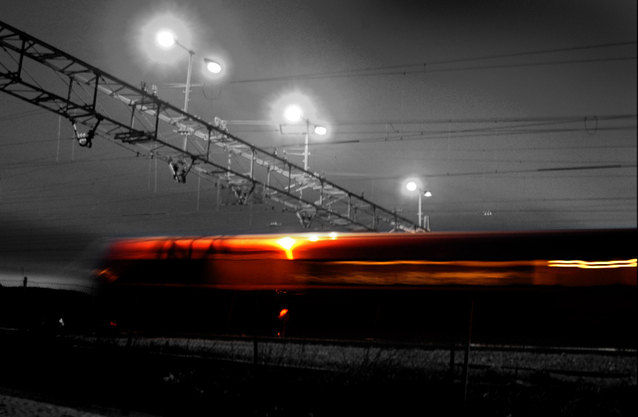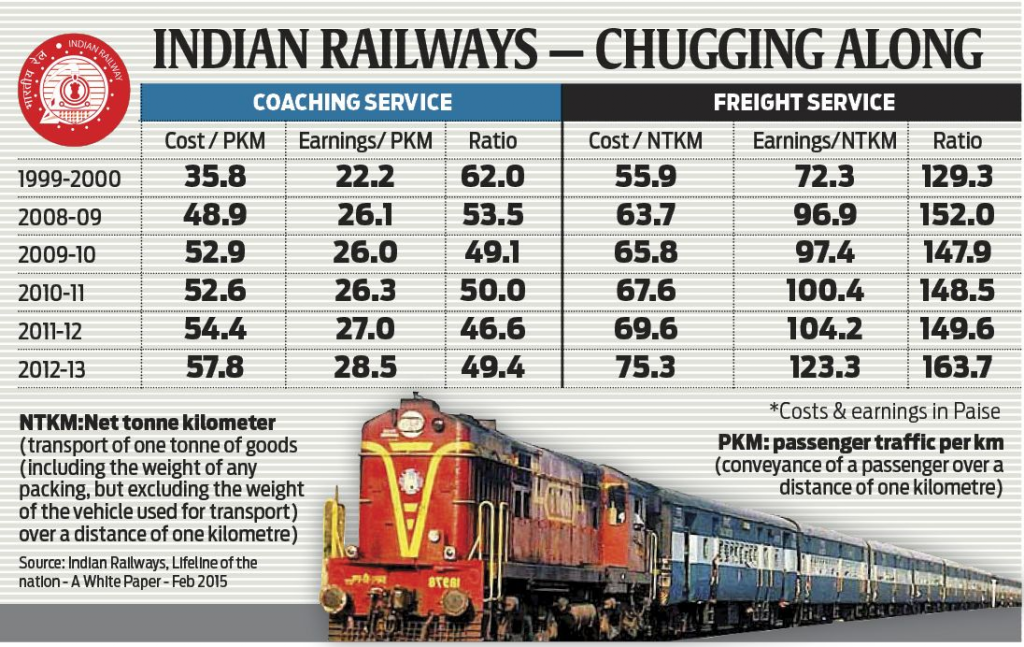R N Bhaskar
15 June 2015
When Suresh Prabhu, Union Minister for Railways made his railway budget presentation earlier this year, he spoke of the challenges that lie ahead.
He talked about how the railways are expected to earn like a commercial enterprise, but actually serves like a welfare organisation. He explained how the railways carries out social service obligations worth more than Rs20,000 crore by offering services below cost. This, he pointed out, was almost half of the Railways’ Plan Outlay under budgetary sources.
Surplus revenues, he added, were declining, leaving hardly any resources for the railways’ development works. The tariff policy adopted lacked a rational approach, he said, resulting in passenger fares being kept lower than costs; loss per passenger kilometre had thus increased from 10paise per km in 2000-01 to 23paise in 2012-13. Result: surplus, after paying obligatory dividend and lease charges, which was just Rs11,754 crore in 2007-08 is expected to be much lower at Rs602 crore in the current financial year.
Watch the table alongside. It confirms what Prabhu mentioned as part of his budget presentation — that passenger fares have not kept pace with costs. It also shows how freight has been subsidising passenger traffic. One solution lies in increasing passenger fares. Another, as yet unspoken, is the urgent need to address leakages.
This means putting into place systems that are (a) customer friendly, and (b) reduce leakages to almost zero levels. Anecdotal evidence suggests that this alone could up railway revenues by nothing less than 20%.
A good way of doing this is by adopting the ticketing practices of cities like London (which is what the metro rail systems in Delhi and Mumbai have already adopted). You can travel from anywhere to anywhere using an Oyster Card.
Oyster is a plastic smart-card which you can hold and pay as you go. You can use an Oyster card to travel on bus, Tube, tram, London Overground, Rail and most National Rail services in London.
It costs almost nothing. You just pay an amount into it (5 pounds to say 100 pounds). To enter a station you must swipe the prepaid card and it registers the point of embarkation. To go through the exit gates you swipe it again and it registers the point of disembarkation and deducts the required amount from your card.
But in Mumbai, the metro (and the monorail) have been a bit customer unfriendly — they forfeit the customer’s money if the amount is not used up within 3-6 months. The Oyster Card — on the other hand — is permanently valid. The London system does not shortchange its customers the way Mumbai does.
After all, the money belongs to customers, not the railways. Moreover, why should the railways get greedy with customers’ money? Should they not be happy instead with the interest-free float they enjoy?
But to get the Oyster type ticketing in place, Prabhu will have to ensure the following:
First, he will have to order streamlining of the stations so that no exit from (or entry onto) the station is possible except through the designated gates. At the gates passengers must swipe their cards to enter or exit. But this means sealing off any ‘exits’ along the tracks which some passengers use to enter or exit from a station.
Second, this also means putting up escalators and elevators at all stations, so that the old and the feeble are not tempted to cross the tracks — navigating tracks is often easier than climbing stairs.
Third, such cards will gradually have to be standardised for all cities — for regular trains, monorails and metros (and later even buses). A uniform system will allow the customer to use the card across the country. It will provide the railways with real-time information on travel patterns. It will make travel that much easier and will leave the railways with a great deal of ‘float money’ interest-free.
Fourth, Prabhu will have to ensure that purchasing such cards or recharging them is made easier. The railways need to ensure that people do not have to wait in any queue for more than five minutes.
Fifth, he will have to ensure that each station has enough entry and exit gates to cope with the rush of passengers during peak hours. Fortunately, there is the experience of authorities at the metro rail systems in Delhi and Mumbai to go by.
More importantly, such a system will help curb malpractices by both the ticket-issuing and the ticket-inspecting teams. Such corruption hurts the railways, and destroys customer confidence in the integrity of railway personnel.
Much of the required capital expenditure could be met through the sale (via auction) of development rights for building commercial spaces atop railway stations. Even otherwise, just plugging the leakages in passenger ticketing will allow the railways to earn at least Rs7,500 crore additionally each year (20% of Rs37,500 crore of earnings from passenger tickets in 2013-14). It could actually be a lot more — if one considers the rampant ticketless travelling in UP and Bihar.
It would allow the railways to rake in more money, curb freeloaders, and provide better services — first in key sectors, and then across the entire country.
The author is consulting editor, DNA.
Read the original article here.
Click here for more on India and its policies.






































COMMENTS